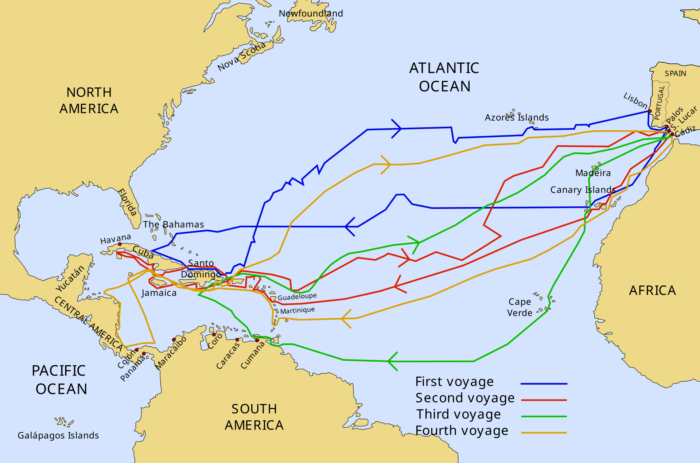
redo Jump to...
print Print...
(by Miranda Devine, New York Post) –Celebrities and environmentalists the world over have seized the opportunity of Australia’s bushfire catastrophe to push the dangerous myth that climate change is to blame.
“When one country faces a climate disaster, we all face a climate disaster,” Cate Blanchett declared at the Golden Globes on Sunday.
“Make no mistake. The tragedy unfolding in Australia is climate change-based,” said Russell Crowe.
“Australia is on fire,” tweeted teenage climate evangelist Greta Thunberg, decrying the lack of “political action [to combat] the climate crisis.”
“Australia is committing climate suicide,” ran the headline in the New York Times.
I’m sorry, but I lived in Australia through the past two decades of escalating fire crises and it’s not climate change that has caused today’s disaster, but the criminal negligence of governments that have tried to buy green votes by locking up vast tracts of land as national parks, yet failed to spend the money needed to control ground fuel and maintain fire trails.
Instead, they bowed to an ideology that obstructs necessary hazard reduction and prevents landowners from clearing vegetation around their own properties, all in thrall to the god of “biodiversity.”
How’s that biodiversity now on incinerated land sterilized of all life forms?
I’ve interviewed local volunteer firefighters who bitterly recounted the bureaucratic obstruction they faced in performing prescribed burns [controlled burns] in the offseason to prevent uncontrollable summer conflagrations.
One of my guides was Australia’s foremost bushfire researcher, Dr. Phil Cheney, who has spent 30 years trying to convince authorities that if ground fuel is reduced in a scientific, systematic fashion every year, fire intensity is reduced to a manageable level, no matter what the weather conditions. A quadrupling of ground fuel means a 13-fold increase in the heat generated by a fire. Hazard reduction won’t prevent fire but it will reduce its intensity so that it can be controlled.
So whether or not you believe the most dire predictions of climate alarmists makes no difference. We can’t dial down the Earth’s temperature any more than we can lock up every arsonist.
The only practical way to prevent unmanageable fires is to reduce the one variable we control: ground fuel.
“Climate change has not caused the current fire crisis,” says Australian Capital Territory forester and former acting fire control officer Ian McArthur.
“Long unburnt fuels in national parks are the primary cause. Basic fire management states that a fire needs oxygen, a heat source and fuel. The only one of those that can be manipulated is fuel. The more fuel, the more intense the fire, the harder it becomes to suppress the fire.”
As dangerous fuel loads have been allowed to build up in southeast Australia, ever more cataclysmic fires have erupted until, finally, this season came a perfect storm of the country’s most extreme drought since the turn of the 20th century and record high temperatures.
At least 26 people have been killed as bushfires burned more than 12 million acres — an area more than one-third the size of New York state.
It is an ecological disaster. The fires are estimated to have spewed into the atmosphere the equivalent of two-thirds of Australia’s entire annual carbon emissions.
But it could have been avoided if the warnings had been heeded.
For more than 20 years, Australia’s Greens party and greenies infiltrating government bureaucracies have obstructed the hazard reduction that experts like Cheney and McArthur recommend.
Despite their attempts to rewrite history, submissions to bushfire inquiries from as far back as 1992 are evidence of green opposition to hazard-reduction burning as a threat to “biodiversity,” and their urging that resources be spent instead on water-bombing helicopters, as well as on the amorphous task of “stopping climate change”.
Anecdotes illustrate the problem.
In September, protesters in East Gippsland in the state of Victoria stopped a hazard-reduction burn that they said was “killing baby birds alive.”
“I’m more worried about climate change,” one protesting grandmother told the Australian Broadcasting Corporation. As a result, the hazard reduction was reduced to 3 percent of the area planned. Two months later, East Gippsland was burned out.
Punishment for unauthorized hazard reduction has been brutal. For instance, when electricity authority TransGrid in 2001 cleared a 200-foot-wide firebreak to protect high-voltage lines that ran through rugged bushland near the national capital of Canberra, the authority was sued by four government agencies and fined $1 million. A year later, when a calamitous fire swept the Snowy Mountains in New South Wales, TransGrid’s firebreak was the only safe haven for kangaroos, wallabies and three forest workers.
In the dairy town of Taree, farmer Warren Buttsworth was charged with “unlawful clearing of native vegetation” because he dug out the roots of casuarina trees still smoldering underground weeks after a bushfire was extinguished.
In rural Victoria, volunteer firefighter Liam Sheahan was almost bankrupted when he was fined $50,000 for clearing trees to create a firebreak around his property. Five years later, when the deadly 2009 Black Saturday fires swept through the area, his was the only house left standing.
Last year, under pressure from green activists, the government of New South Wales, home to much of the fire destruction today, even listed prescribed burning [controlled burns] as a “key threatening process” under the Environmental Protection and Biodiversity Conservation Act.
Climate change has become an excuse for green mismanagement.
Published January 8, 2020 at nypost .com. Reprinted here Jan. 9, 2020 for educational purposes only. May not be reproduced on other websites without permission from the New York Post.
Watch an August 2018 CBS news report on devastating wildfires in California:
Questions
1. The purpose of an editorial/commentary is to explain, persuade, warn, criticize, entertain, praise or answer. What do you think is the purpose of Miranda Devine’s editorial? Explain your answer.
2. In her commentary, Miranda Devine identifies a problem, describes the cause and offers a solution.
a) What problem does she illustrate? (see para. 1, 6)
b) What does she say is the cause of the problem? (see para. 6-7, 9-10, 13-14, 18-19)
c) What solution does she say will enable firefighters to control yearly wildfires?
(para. 10, 12)
3. California has experienced devastating wildfires in recent years. The state also has strict environmental regulations prohibiting controlled burns and the clearing of brush. What do you think about each of the following points about Australia’s wildfires made by Ms. Devine in this commentary?
- Hazard reduction [clearing underbrush and overgrowth and conducting controlled burns] won’t prevent fire but it will reduce its intensity so that it can be controlled. (para. 10
- So whether or not you believe the most dire predictions of climate alarmists makes no difference. We can’t dial down the Earth’s temperature any more than we can lock up every arsonist. (para. 11)
- The only practical way to prevent unmanageable fires is to reduce the one variable we control: ground fuel. (para. 12)
- [Australia’s wildfire disaster] could have been avoided if the warnings [to allow the resumption of controlled burns and clearing brush] had been heeded. (para. 18)
4. Do you agree or disagree with the assertions Miranda Devine makes about wildfires, extreme environmental policies and climate change? Explain your answer.


